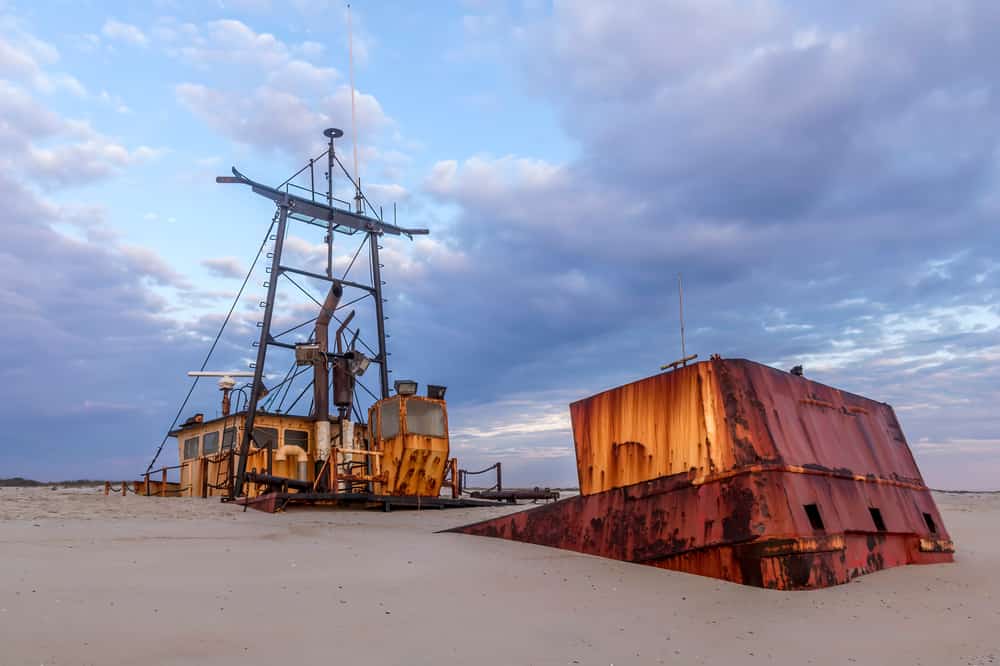The lore of pirates, sailing the high seas, and wooden ships ferrying its sailors toward the prospect of adventure feel almost mystical — like they’re stories out of a movie. Wooden ships remain a very real part of world history though; ships like the Carrack and the Fluyt sailed the open ocean between the 14th and 16th centuries on explorations or to trade goods. Some of these explorations, though, ended in tragedy due to pirates, poor weather, or an unyielding sea.
Would it surprise you to know that a string of islands in North Carolina plays host to many such shipwrecks? The Outer Banks has garnered the nickname “The Graveyard of the Atlantic” for the hundreds of shipwrecks littered along its shores and in the depths of the ocean around the city.
Learn more about the amazing shipwrecks you can still see in the Outer Banks today and why so many shipwrecks happened around the Outer Banks.
8 Awe-Inspiring Shipwrecks You Can Still See in the Outer Banks
Between the 1500s and the 1700s, the Outer Banks was an influential home base and port town for many sailors. Even the infamous Edward Teach, better known as Blackbeard, used Ocracoke as his last refuge before meeting defeat at the hands of Virginian soldiers.
Discover eight incredible shipwrecks worth checking out the next time you’re in the Outer Banks.
Queen Anne’s Revenge
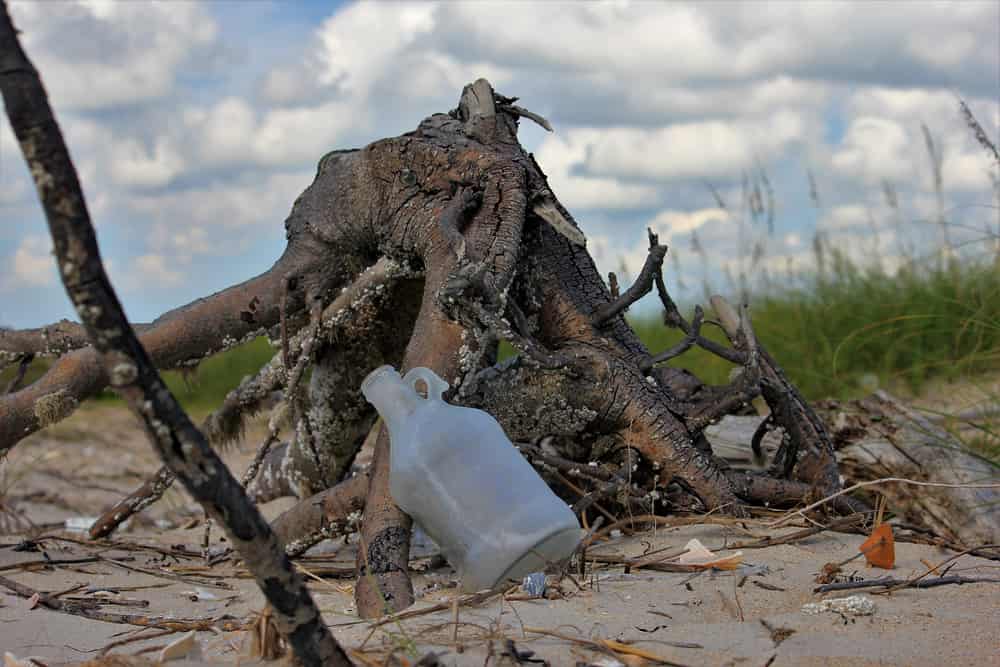
Blackbeard sailed in and around the Beaufort Inlet.
©Tony Maloni/Shutterstock.com
In 1718, the pirate Blackbeard commanded a sloop called The Adventure which he had stolen from a previous captain. He and his crew added it to their flotilla, of which The Queen Anne’s Revenge remained the flagship. Familiar with the waters around the Outer Banks, Blackbeard and his crew lured the British forces toward what’s now known as Beaufort Inlet to make them run aground before unleashing a devastating flurry of cannon fire.
While the pirates’ attack caused significant damage to the Royal Navy, The Adventure had also run aground on the inlet. As the ships struggled to regain footing in the open water, they ran alongside each other. When the pirates boarded the British ship, a fierce and bloody battle ensued that ended with heavy casualties on both sides — and Blackbeard was finally defeated.
Lieutenant Maynard, who had commanded the Royal Navy that fought Blackbeard, sailed The Adventure back to Virginia the following December, and no further account of the sloop exists. However, in 1996, divers found wreckage off the coast of Beaufort Inlet that many believe to be the remains of The Queen Anne’s Revenge. Tourists can view the excavated remains in a large museum today.
The Boiler Wreck

Many ships run aground in the Oregon Inlet.
©arthurgphotography/Shutterstock.com
Visible with the naked eye, remains of The Boiler Wreck — also known as The Oriental — pop up from the waves about 150 yards out.
Unlike many other shipwrecks in and around the Outer Banks, this wreck inflicted no casualties. Sources debate the cause of the shipwreck; some claim it was a crewmember falling asleep on his post while others blame a faulty compass. Whatever the reason, The Oriental ran aground just after passing the Oregon Inlet. Hundreds of thousands of goods were thrown overboard in an effort to get the ship to float again, but every attempt failed and the crew decided to abandon her. Because the Union Navy was very active in the area, all sailors were rescued by other ships.
When you’re at the Pea Island Visitors Center, look directly across into the ocean to see The Oriental’s boiler still visible from its grave in the Atlantic.
El Salvador

Thousands of pounds of gold were lost aboard the
El Salvador.©corlaffra/Shutterstock.com
During a hurricane in 1750, the Spanish treasure ship El Salvador is thought to have run aground near Beaufort Inlet.
The El Salvador was on a merchant trip with six other ships, all of which faced brutal winds and course correction when faced with the impending hurricane. It embarked on its transatlantic journey from Cartagena, Colombia with the destination of Spain to deliver a plethora of gold and silver.
When the six ships encountered the hurricane off the northeast coast of Florida, three — the El Salvador, the Guadalupe, and the Soledad — got driven ashore. Out of El Salvador’s wreckage, only four crew members survived. The shipwreck was so devastating that once the weather cleared, all that was visible were a few lines of rigging above the sand; the rest of the ship had been buried under water, sand, and debris.
Somehow, the other two ships survived and ferried most of their treasure to Spain, but El Salvador’s treasure was never recovered. Even in 2023, North Carolina seeks to search the wreckage 27 feet underwater off the coast of the inlet to solve the mystery of the shipwreck once and for all. While tourist trips don’t currently have a date, local and regional explorers actively work to bring artifacts back for tourists to enjoy.
The Pocahontas
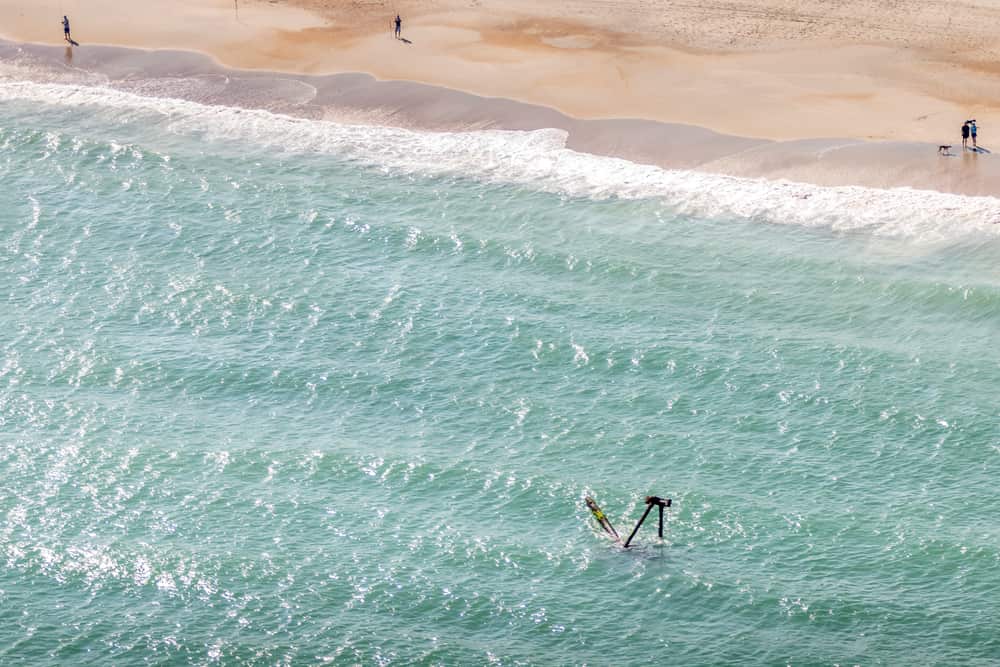
You can spy part of
The Pocahontassticking out of the water.
©Jason Schronce/Shutterstock.com
This is one of the easiest shipwrecks to spot with your naked eye in the Outer Banks. Sitting just 75 yards from shore, The Pocahontas’ paddle wheel shaft sticks out of the water, ready to greet residents and tourists alike. Some also know this shipwreck as the remains of The Richmond.
In 1862, paddle-wheel steamer Pocahontas became part of the Burnside expedition. However, the boat became ravaged by strong winds that rendered its steamers obsolete and the boat hurtled into the shore. Once stuck, a leak sprung that the crew couldn’t repair, and evacuation was imminent. No sailors perished, but the crew forfeited nearly 80% (90 of 114) of the infantry horses on board.
To see the wreckage of The Pocahontas, travel to Sand Street in nearby Salvo, North Carolina. You’ll see the paddle wheel sticking out of the water on a clear, sunny day.
USS Monitor
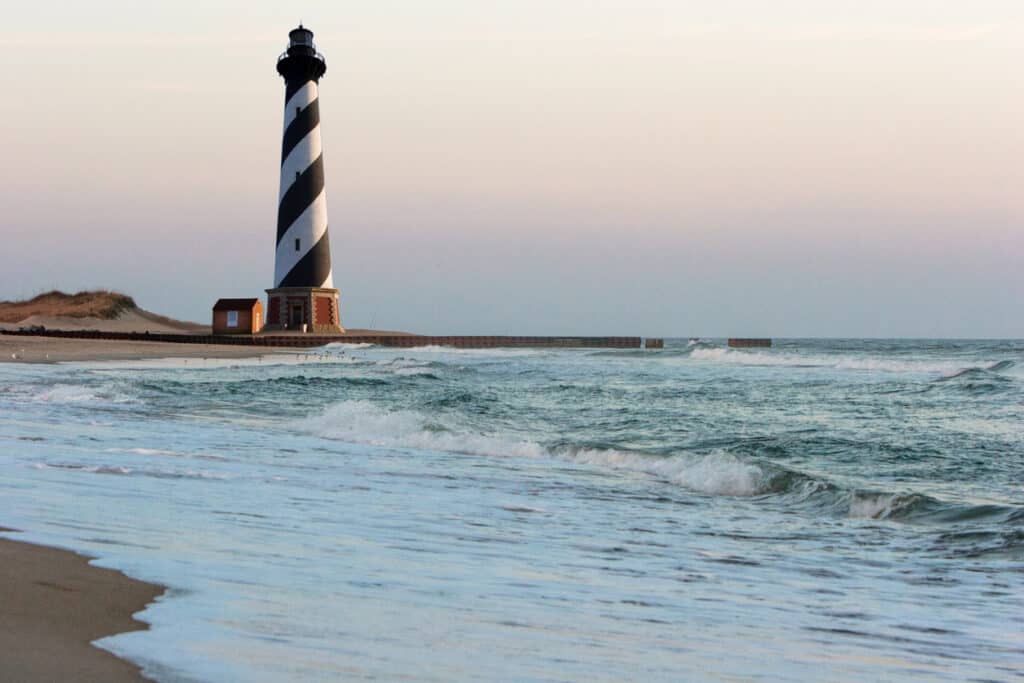
Cape Hatteras served as the site of the
USS Monitor‘s untimely sinking.
©iStock.com/Jens_Lambert_Photography
On a dastardly New Year’s Eve in 1862, the Union’s USS Monitor met a bitter end during a violent storm off of Cape Hatteras.
During the beginning of the Civil War, the Union caught wind that the Confederacy had built an ironclad named Virginia and needed to compete with the firepower. Nearly 100 days after its conception, USS Monitor launched off of the East River in New York, ready to meet CSS Virginia head-on.
Meet they did — only a few months later, the ships fired on each other for hours before the Monitor’s captain became temporarily blinded by an explosion. The Monitor retreated to an inlet where Virginia couldn’t follow and the latter ship assumed victory. When the Monitor returned and found Virginia was gone, the crew also assumed victory. In reality, the battle was a draw, with neither side inflicting serious damage.
About six months later, the crew of the Monitor followed under tow of the USS Rhode Island to provide assistance in Beaufort after the Union forces captured Norfolk. Unfortunately, howling winds and a leak in the hull spelled disaster. The Monitor’s engines began to flood and swiftly fell hundreds of feet under the waves — taking 16 men with it.
In 1973, a research crew located remains of what they hoped was the USS Monitor. A sea probe expedition in 1974 confirmed the lost ship’s identity.
While the remains still rest 230 feet under the water, you can view the wreckage 16 feet off of Cape Hatteras through sonar imaging, photographs, and videos.
Margaret A. Spencer
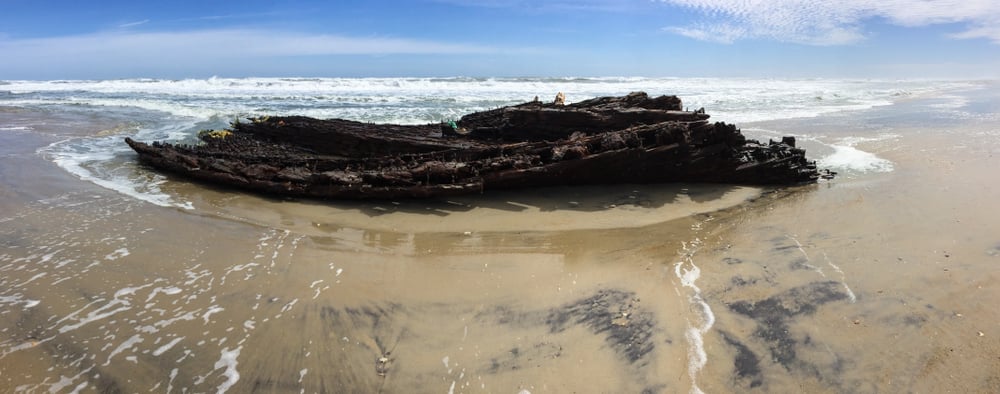
All that remains of the Margaret A. Spencer in Rodanthe.
©Lynda McFaul/Shutterstock.com
The Margaret A. Spencer crash remains a mystery besides her keel still standing on the surf line near Rodanthe today. The date of her construction, sail, and eventual destruction remains unknown. Based on an unearthed telegram from decades ago, the schooner was carrying timber, capsized, and ran aground due to harsh winds.
The Triangle Wreck
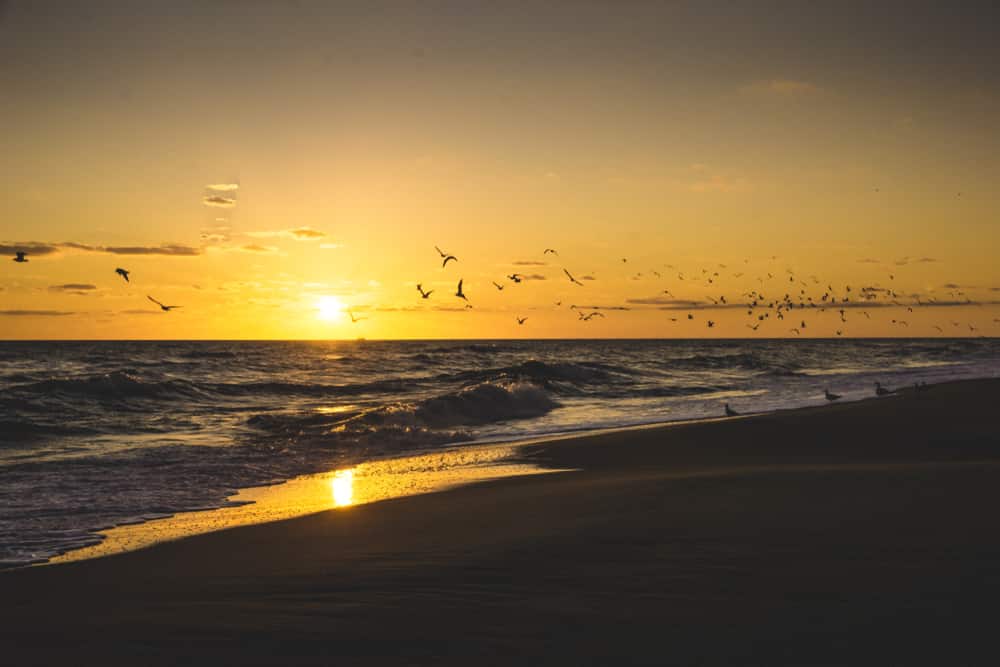
Kill Devil Hills plays host to two shipwrecks in the same place.
©Jesse Allan/Shutterstock.com
The Triangle Wreck is a site with two ship remains — that of The Kyzickes and Carl Gerhard.
In 1927, The Kyzickes ran aground after a storm. Laden with crude oil, the ship bound for Spain, sailing from Baltimore, started to take on water, which later destroyed its boiler tubes. The water that infiltrated the hull caused the ship to lose power and it began to drift inland, finally hitting a shoal in Kill Devil Hills and breaking in two.
Just two years later, the vessel Carl Gerhard accidentally ran aground in the exact same spot, slicing through the remains of The Kyzickes. After years of weather and use as a bombing practice site, the wreckage has sunk several feet below the water line and morphed into a triangle shape of wreckage.
Tourists can see this wreckage from an aerial view of the shoreline, or boat tours 100 to 250 yards out from the shore.
USS Huron

Divers are welcome to explore
The Huronwreckage.
©Focused Adventures/Shutterstock.com
This historic warship’s tragic end came unexpectedly at the hands of a vicious storm. On its first night out to sea in 1877, the southeast brought heavy winds and rain that pelted the iron sides and steam engines. A small error in the compass complicated the matter, pushing the ship into even greater danger.
Mere hours after embarkation, the Huron ran aground in Nags Head just 200 yards from the beach. Though close to the beach by regular standards, the storm was so dangerous that nearly all the sailors chose to stay on board in hopes of rescue or a break in the weather. The storm quickly wore down the crew and swept nearly 100 men overboard in a single night.
Today, the wreckage of The Huron sits 250 yards from the beach under waves. The site remains open to divers and snorkelers who can marvel at the variety of sea life teeming in the wreckage. However, state and federal laws prohibit visitors to touch or take any piece of the wreckage from the site.
How Often Did Shipwrecks Happen?
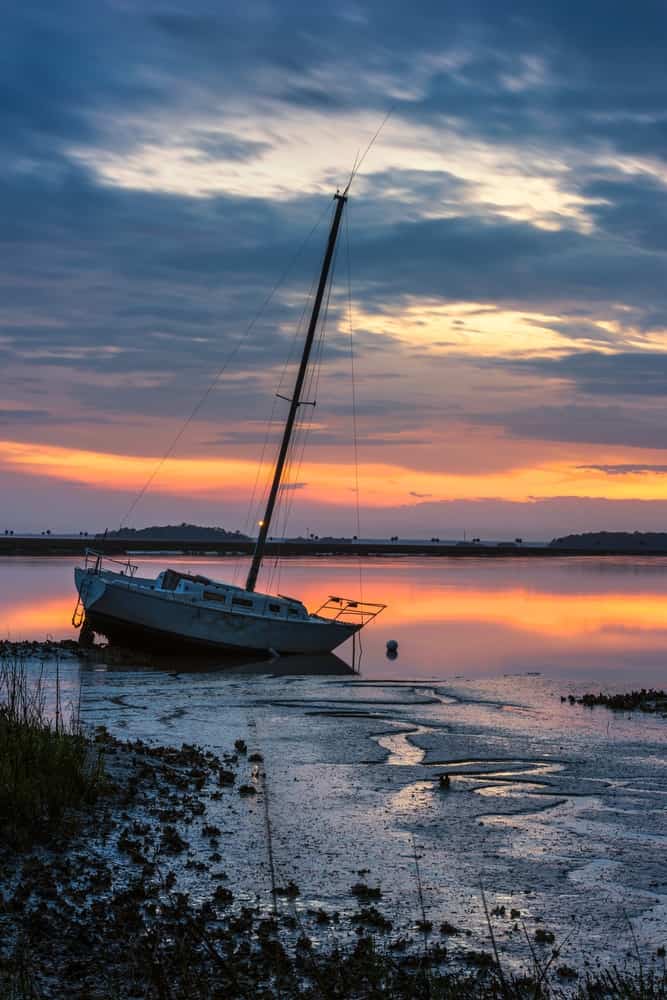
Ships have a good chance of running aground in Beaufort Inlet.
©anthony heflin/Shutterstock.com
Known as “The Graveyard of the Atlantic” for a reason, some experts believe the Outer Banks’ coast is home to over 3,000 shipwrecks.
Because the Atlantic Ocean doesn’t provide a straight shot inland to North Carolina, the Outer Banks serves as a pivotal port city. However, the unpredictable weather makes the land- and waterscapes just as unpredictable. Hundreds of years ago, captains and crews had difficulties navigating the shifting inlets, sandbars, and coastlines. Residents of the island made the navigation problem worse, as well, by tying lamps onto horses and walking across the shoreline to confuse ships and cause them to run aground in the beaches.
Why Is the Outer Banks a Great Place to See Shipwrecks?
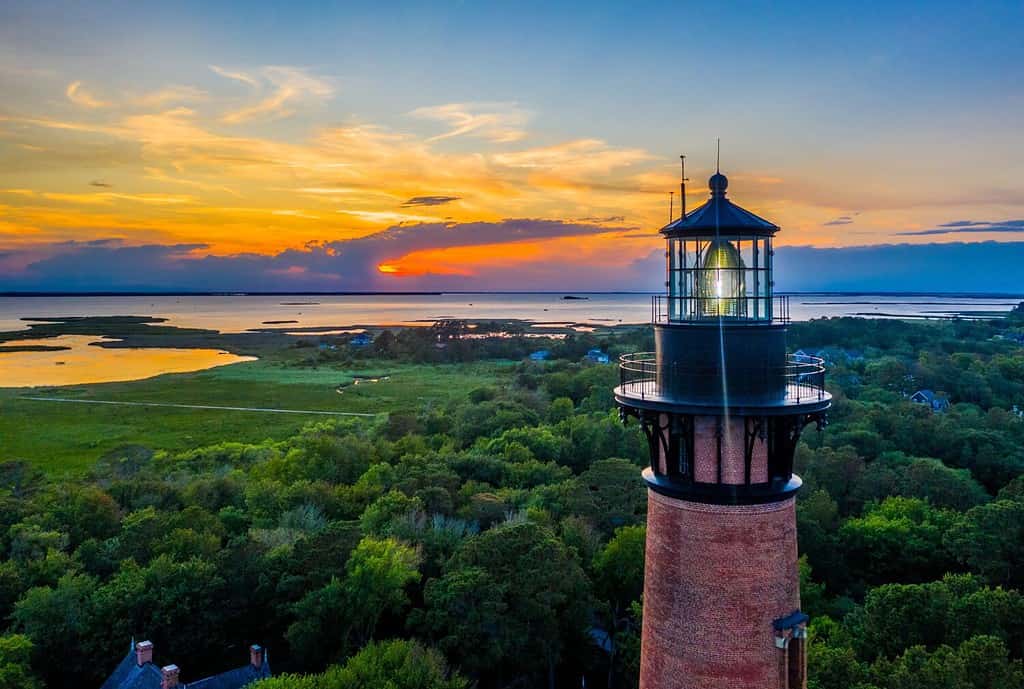
Visit ruins and museums about shipwrecks in the Outer Banks.
©Frederick Millett/Shutterstock.com
The Outer Banks creates the perfect storm — both literally and figuratively — for ships to run aground; especially in the sixteenth and seventeenth centuries when technology and maritime navigation lacked the finesse it has today. Some of the factors contributing to the Outer Banks’ deadly reputation include:
- Shifting sandbars.
- Strong winds and storms.
- Unmapped shoals.
- Nighttime journeys.
- User or compass errors.
In addition, the Outer Banks sits close to the meeting of two currents. The cold northeast Labrador Current and the warm current off of the Gulf Coast intersect near Cape Hatteras, creating a plethora of marine life — and unpredictable weather patterns.
What Lies Beneath the Water Is Yours To Find
The wreckage of wooden and iron ships aren’t the stuff of legends; they’re history right below the water. When traveling to the Outer Banks or a nearby beach, consider tacking on shipwreck sightseeing to your list and become a part of the swashbuckling history of North Carolina.
Thank you for reading! Have some feedback for us? Contact the AZ Animals editorial team.

